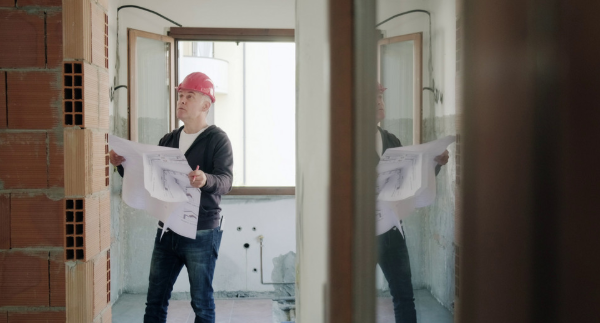A little time and effort into surface prep can go a long way in increasing the life of exterior paints. Even better quality paints applied over underprepared sidings might last short and appear dull. Skipping prep work on account of time consumption, extra expense, and additional labor is quite regular. But knowing the importance of preliminary surface prep might change that mentality. Professional service from a paint company in Westport called Elite Finishing LLC can handle these jobs well.
Significance Of Surface Prep
Durability
One of the primary reasons for getting surface prep done is to enhance paint durability. Home exteriors are exposed to harsh rain, hail, and snow throughout each year. Moreover, the seasonal fluctuations in humidity also can affect external surfaces. Other external elements like organic growth and insect invasions are also equally detrimental to your home exteriors. Hence, a properly prepared exterior paint job might have the best chance to withstand such environmental abuse for longer.
Visible Elegance
Without prior surface prep, exterior paint jobs might fail to achieve the desired results in terms of overall aesthetics. This might not be immediately evident due to the initial wetness of the paint. But once the paint starts to dry out, unevenness and other surface flaws start showing up prominently. Initial prep work to get the surface even and repaired can largely avoid such a situation.
Paint Adhesion
Dirt and debris on external surfaces can restrict the proper adhesion of paint. As a result, peeling or flaking of paint after a short while becomes quite a possibility. However, surfaces might look quite clean to untrained eyes when it comes to fine dust layers. So, professionals for an exterior paint job are usually preferable to take care of these problems.
Finishing Smoothness
Paint patches on the exterior surfaces can be a result of inadequate cleaning and priming prep work. Failing to do so prevents uniform absorption of paint on the walls. When the paint dries out completely, the final shades might vary over the surfaces. Thus, surface prep can support uniform paint absorption and render that desired smooth finish to the exteriors.
Process For Surface Prep
The steps for surface prep vary depending upon the surface conditions and siding materials. Here we try to discuss a few of the most common processes that go into surface prep before painting exteriors:
Cleaning
Ideally, subject surfaces need to be free of any dust and dirt before getting painted. Accumulation of flying debris on external surfaces is unavoidable over time. But painting over dust-contaminated surfaces will mean the paint sticking to dirt rather than the surface. Peeling of paint, paint bubbles, and cracks in the paint can all be the results of this. Surface cleaning can be done either manually or by pressure washing. Although pressure washing is more suitable for cleaning hard-to-reach areas, it must be ensured to allow sufficient drying time for the surface before paint applications.
Scrapping
Peeling or flaking of existing paint from exterior surfaces might start occurring after a few years of application. This is one common reason for homeowners to decide on repainting external walls. However, scrapping any loose paint from the surfaces is strongly advisable before a new coat. Using long-handled or other suitable pull scrapers can do the trick. These carry replaceable blades for convenience but need careful handling to avoid unwanted digs into the sidings. Scrapping ensures better adhesion of paint onto the bare surfaces, thereby increasing paint durability.
Repairing
Exterior surface imperfections should be repaired for better finishing results from a paint job. This includes any kind of cracks, dents, missing caulk, rotted sections, or even mold and mildew growths. Cleaning and scraping will make it easier to identify such surface damages. Additionally, any protruding nail heads should be either cut to level or hammered slightly below the surface. Rotted sections can be replaced and bleach treatments can handle issues with mold and mildew.
Sanding
Surface sanding can avoid the transition appearance for new paint coats from existing layers to the bare surface. Any rough areas like exposed wood or alternate material surface should be sand down, while feather-sanding might hold good enough for the siding edges. Manual sanding with sandpaper can be an option but not quite suitable for large areas. In that case, renting an electric sander will save on labor and time. While a finer grit of the sander is sufficient for minimally uneven surfaces, medium to fine grit transition better suits the sanding of more rough sidings.
Priming
Surface priming is the last but not the least important step in surface prep before paint applications. Applying a coat of good quality primer can increase the durability and final look of exterior paints. Primed surfaces ensure better adhesion of paint with superior binding. Moreover, primed layers block existing paints or stains from reappearing through the new paint coats. While priming a surface for the transition from dark to a lighter shade, tinting the primer with the new shade is also an excellent choice.









